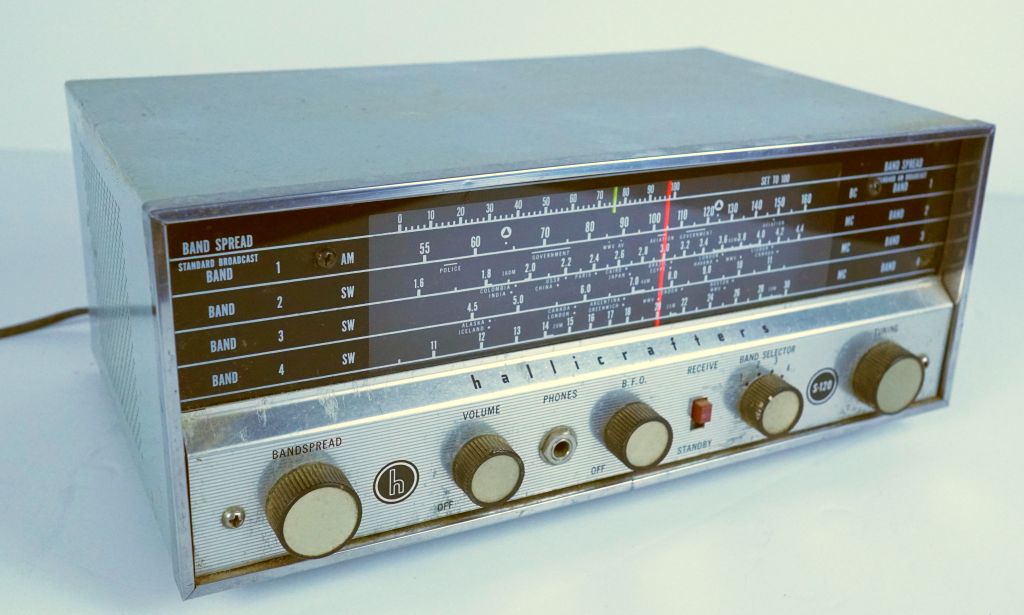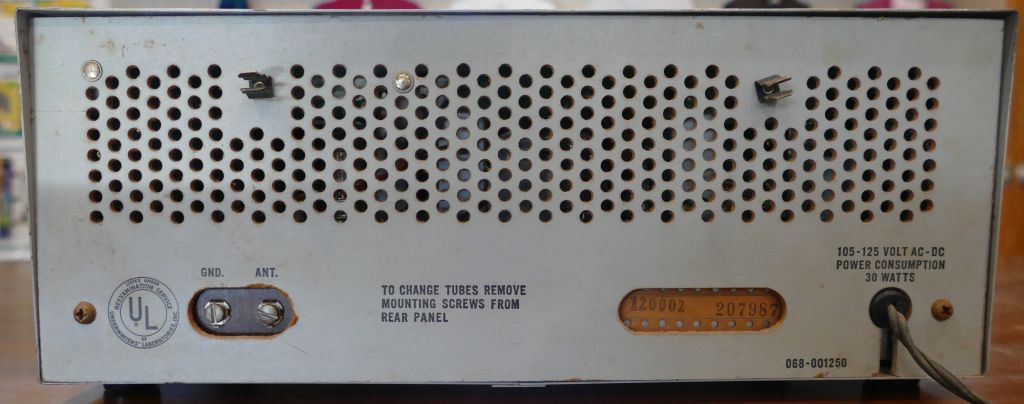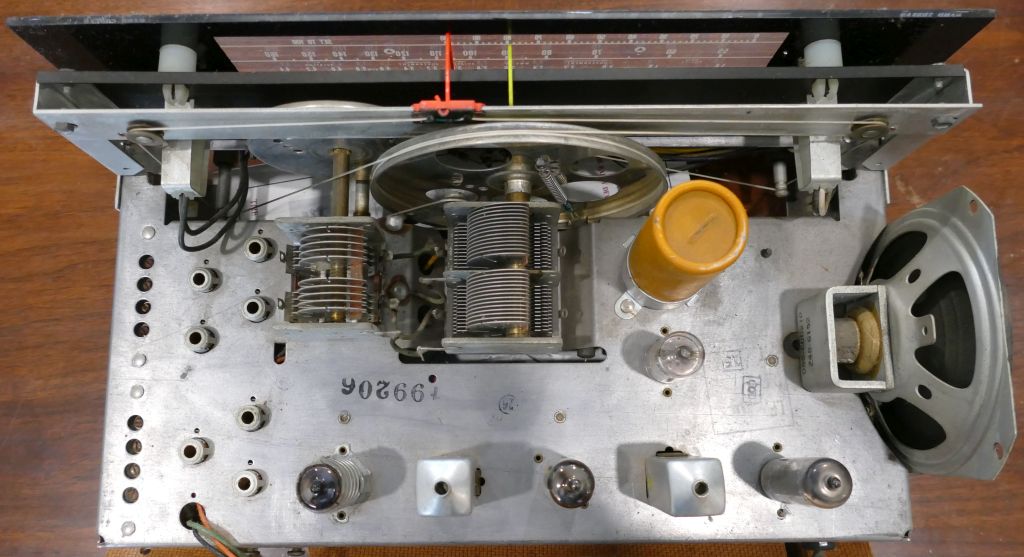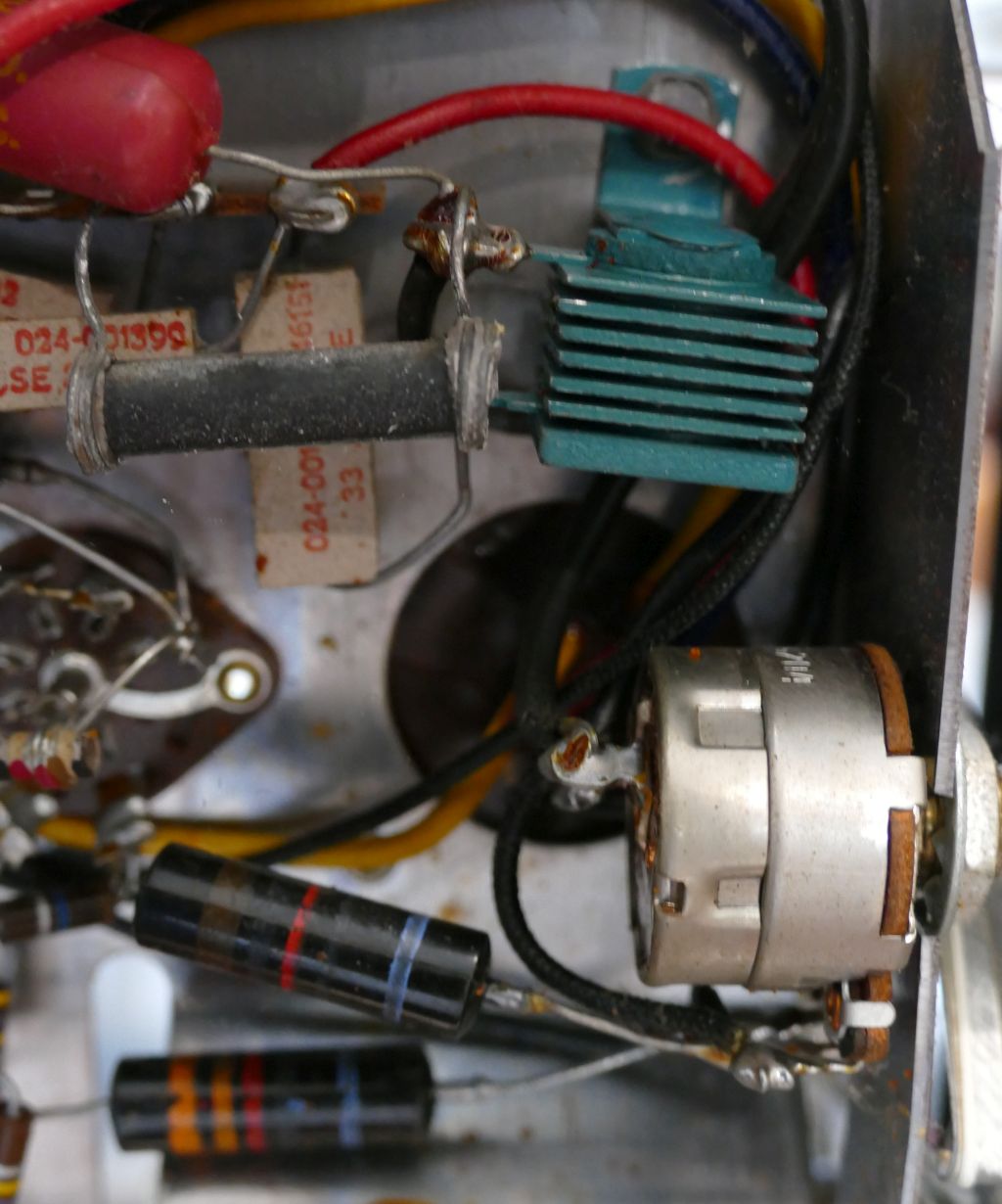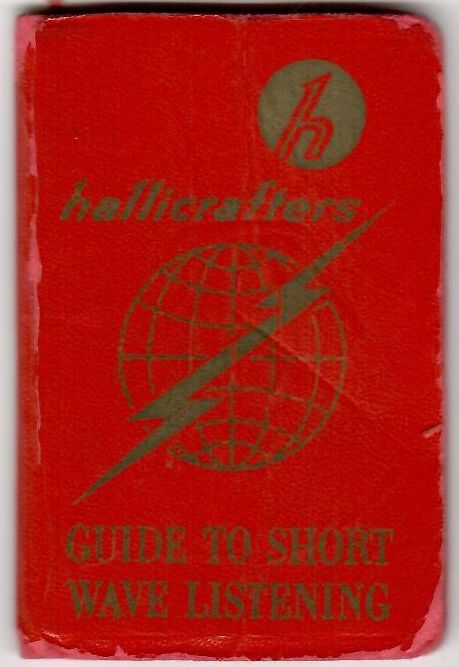The S-120 was an entry level shortwave radio that was introduced in 1961. It replaced the previous S-38 series of receivers. This radio featured a totally modern-looking cabinet, 4 bands, internal speaker, and a BFO (Beat Frequency Oscillator) which was necessary for the resolution of single sideband signals. The radio even came with its own collapsible antenna that attached to the back panel. It is very rare to see an S-120 that still has its antenna.
This radio is capable of receiving standard AM broadcast stations (BC) and international shortwave and amateur radio transmissions (550-30,000 kHz). The radio was heavily advertised in magazines that attracted mostly young men. The best example was Boys’ Life magazine, a publication of the Boy Scouts of America. Many people who went on to be serious radio hobbyists began with this radio because it was relatively inexpensive. The $69.95 price does not sound like much today, but in the early 1960’s that represented a significant part of a full week salary for many people.
Our sample S-120 shortwave radio was donated to the museum by Chris Moore . It should be relatively easy to restore this radio. It has only 4 vacuum tubes and there is plenty of room underneath to replace old capacitors and resistors. The radio does have a selenium rectifier, though. This will need to be replaced with a modern diode and a resistor (to compensate for the reduced resistance of the diode). The selenium rectifier is usually replaced during a restoration because they frequently go bad while in use and they can release a dangerous gas.
The photos included with this page include a number of period advertisements. Most of these Hallicrafters advertisements came with a new radio. The little red book was a log book that was used to record stations that the listener heard. The 45 rpm record was also part of the advertising. The implication made by all this hoopla was that the S-120 would allow you to hear everything, from local broadcasting and police radio to transmissions from spacecraft and satellites.
It can receive the AM broadcast band (540 KHz to 1600 KHz), and 3x shortwave bands covering 1.6-4.4 MHz, 4.5-11.5 MHz, and 10-31 MHz. It has four vacuum tubes and a selenium rectifier that replaced a vacuum tube used in the S-38. The tubes are a 12BE6: Oscillator & Mixer, 12BA6: IF Amplifier and BFO, 12AV6: 1st Audio Amplifier, AVC, and Detector, and a 50C5: Power Output Amplifier. It has a 5″ internal speaker, and internal ferrite antenna for the AM broadcast band, a 45″ whip antenna for the shortwave bands, and provisions to connect an external antenna. It has a BFO for listening to CW signals.
References:
-
- Shortwave Receivers Past & Present, second edition, by Fred Osterman, 1997
- Radios By Hallicrafters, by Chuck Dachis, 1996
- YouTube video showing our volunteer, Ken Carr, with his new S-120 in 1962
